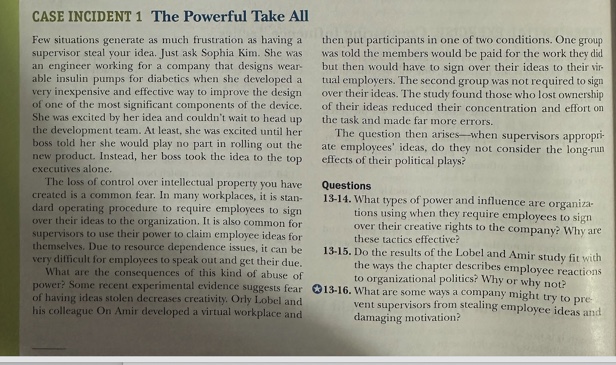Answered step by step
Verified Expert Solution
Question
1 Approved Answer
The objective is to analyze power and conflict in organizational settings. We are to complete the Questions associated with the following Chapter 13's Case Incident
The objective is to analyze power and conflict in organizational settings. We are to complete the Questions associated with the following Chapter 13's Case Incident listed below. For each question how would you utilize an external resource to strengthen your argument?
- How would one answer questions 13-14, 13-15, and 13-16 based from Chapter 13's, Case Incident 1 The Powerful Take All, found on p. 450 attached below?:
- 13-14 What types of power and influence are organizations using when they require employees to sign over their creative rights to the company? Why are these tactics effective?
- 13-15 Do the results of the Lobel and Amir study fits with the ways the chapter describes employees reactions to organizational politics? Why or why not
- 1-16 What are some ways a company might try to prevent supervisors from stealing employee ideas and damaginf motivation?
- Please see uploaded below...

Step by Step Solution
There are 3 Steps involved in it
Step: 1

Get Instant Access to Expert-Tailored Solutions
See step-by-step solutions with expert insights and AI powered tools for academic success
Step: 2

Step: 3

Ace Your Homework with AI
Get the answers you need in no time with our AI-driven, step-by-step assistance
Get Started


